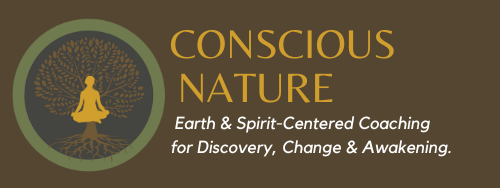A Visit and Message From the Teyuna Spiritual Leaders of the Arhuaco, Kankuamo, Kogi, and Wiwa Peoples
It was now well past the middle of the night. I clambered into bed, tired and ready to sleep after a four-hour car ride home through a downpour of heavy spring rains. I love the rain and actually enjoyed the ride, but by now I was eager to relax into the slumber of a good night’s rest.
Surprisingly, I found my fiancé laying there still awake, albeit half-asleep, riveted by a message she had just received from a friend. Half in the dream world, and half in the waking realm, she stated, “Kogi elders… are coming… tomorrow! We have to go together… and hear them speak!” With that thought in mind, we drifted into our dreams to prepare for a new day.
I had heard for years about the Kogi people, an isolated tribe in South America who maintain their pre-Columbian civilization and ancient sacred way of life, tucked away in the mountain plateaus of the Sierra Nevada de Santa Marta in Colombia.
There, the Kogi Mamos (spiritual leaders) commune with the spirits of Nature and offer constant ceremony to ensure the well-being and harmony not only of their sacred mountain, but of all the world. The Kogi are actually one of four closely related groups that comprise the greater collective known as the Teyuna, also including the Arhuaco, Kankuamo, and Wiwa peoples.
Steeped in their ancient living knowledge of Nature’s balance, with which they pattern every facet of their society, the Kogi identify themselves as the “Older Brothers,” the maintainers of spiritual balance on the planet.
To avoid persecution and enslavement by the Conquistadors, great numbers of Teyuna fled the lowlands surrounding the mountain and joined the Mamos high up in the remote slopes and plateaus. There they have remained, surrounded by their four sacred peaks, home of the great mountain spirits, protected for centuries by the thick wall of jungle that has kept outsiders at bay.
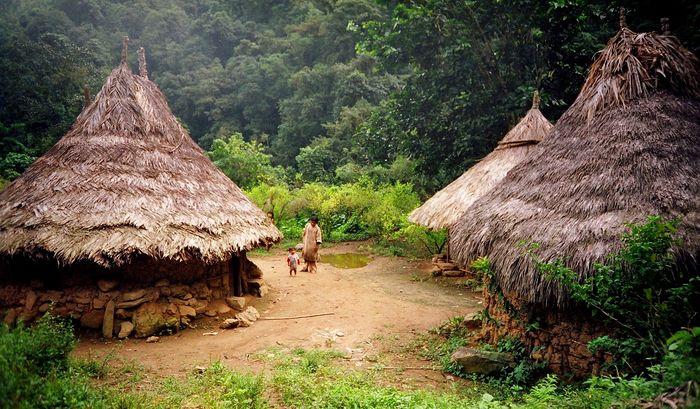
Analogous to the in-depth training of the Tibetan lamas, Mamos undergo extensive mentoring in the Teyuna spiritual knowledge, including a period of at least nine years of deep meditation and prayer in a low-light cave environment. This “dark training” sensitizes their perception to the subtle energies and patterns of the spiritual realms upholding Nature, including the primal source of all life, Aluna. The Mamos come to understand the unity of all life, and learn to work with the complex spiritual web that interconnects the people and the land.
The Elder Brother’s Warning: A Call-Out to Respect Nature
In 1990, witnessing the increasing environmental and spiritual challenges encroaching on the mountain, which they perceive as a living microcosm of the entire planet, the Kogi invited BBC filmmaker Alan Ereira to visit their home. The Mamos had an important message for the world, and they wanted everyone to hear it.
The Kogi’s message was recorded in the groundbreaking 90 minute film, The Heart of The World: Elder Brother’s Warning. The documentary revealed the secret world of the Kogi, introducing their philosophy, their crafts and homes, and highlighting their keen understanding of how to live in balance within a sensitive and complex ecosystem.
The film and the message it carries resounded with audiences around the world, even opening a positive dialogue between the Kogi and the Colombian government; now, each incoming Colombian President visits the mountain to seek a blessing at the beginning of their term of service.
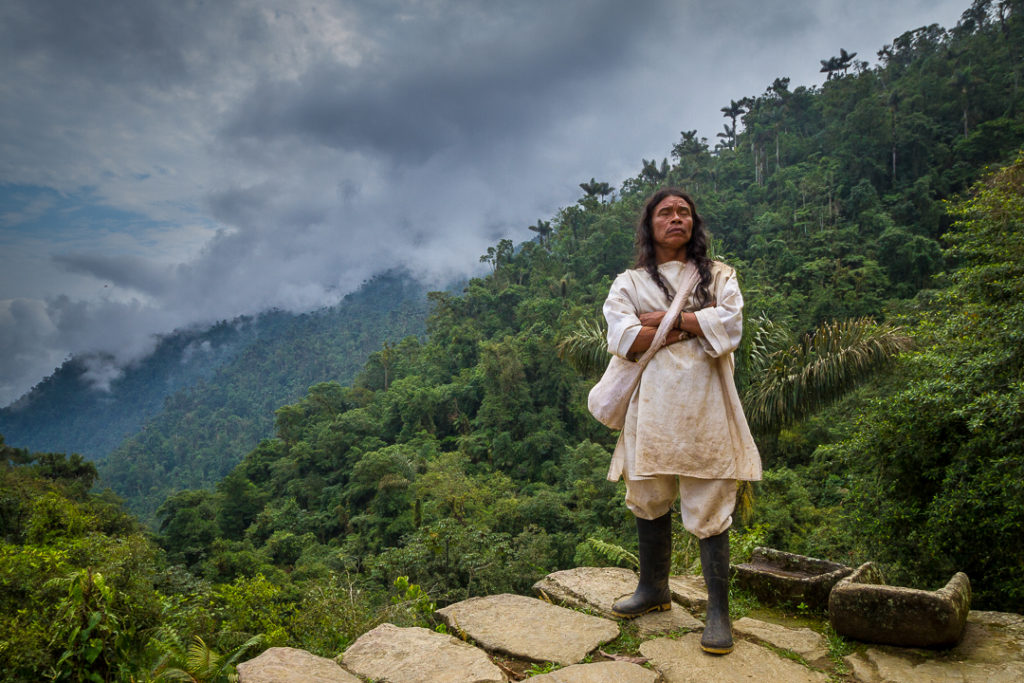
Photograph by Dwayne Reilander CC BY-SA 4.0
Years later, the Kogi continue to recognize the need for a massive change in how modern society interacts with the world’s varied ecosystems. They invited Ereira back to receive an updated message for the world, which appears in the film Aluna (available to view for free from the filmmaker here).
As well, the Mamos are now sending out delegates to speak with communities around the world, to share awareness of their culture, their message, and to help shift the modern mindset back towards the sacred and enduring consciousness of Nature that we are all part of.
Along with sharing their message, these spiritual visionaries are offering healing ceremonies for the Earth in key locations around the globe. Their work feeds the spirits of the land, stimulating global healing in much the same way that an acupuncturist works a specific energy point to heal the body.
Now, a group of delegates were coming to the Hudson River Valley in New York state, and these were the Teyuna speakers my fiancé and I would go to see the evening after we drifted into our restful slumber.
Small, Mindful Steps Towards Mamo Consciousness
We arrived at the Old Dutch Church in Kingston just as the Mamos were preparing to speak. Spiritual leaders from three of the four Teyuna tribes were present (a truly rare moment, since these Wisdom Keepers do not often leave their villages).
A large crowd had gathered to receive these Earth Wisdom Keepers, and to hear the message they had traveled so far to share. Through a translator, the Mamos first welcomed us by sharing a story about Señor Tarantula, who taught their people the sacred art of weaving that is central to their philosophy and way of life.
If ever you come across a tarantula’s burrow, you can observe a smooth funnel of fine threads that are woven into a circular entrance way. The arachnid’s weaving is both fluid and functional.
Likewise, Kogi men maintain the responsibility to weave the village’s clothing, and as is shown in Ereira’s first documentary, the crossbeams of their looms mirror the sacred construction of the spiritual universe. Therefore, each movement of the loom becomes a mindful prayer offering that supports the balance of life.
It is understood by the weavers that the intention and mind state behind the action empowers the cloth with virtue, beneficial for the wearer and also for upholding the integrity of the community. This holds true for all actions in the community, be it planting or road building, or any other task.
The need for this kind of intentional awareness is a not-so-subtle subtext at the core of the Mamos’ message: how we think about the world, about Nature, about ourselves, affects what we do and how we care (or don’t care) about the Oneness that is our environment. What we do to Nature we do to ourselves.
Mirroring Nature’s Wisdom: Awakening Connection Through Movement
After engaging our curiosity and active imagination through the power of story, the Mamos invited us to join them in a “spider exercise,” in which we mimicked the movement of the tarantula. The whole crowd stood with raised arms, fingers wiggling. In my mind’s eye, I sensed the room transform for a moment, as the group collectively took a step closer towards an energetic connection with this mysterious eight-legged bearer of culture.
Spiders appear as the quintessential cultural creatives in cosmologies around the world, primal originators that are often connected to language, technology, and life itself. In ancient Egypt, the goddess Neith was said to have created humanity on her loom, thenceforth reweaving the world anew each day; within the veil separating her direct presence from humankind, each thread and fold encodes the patterns and insights that arise in the course of life.
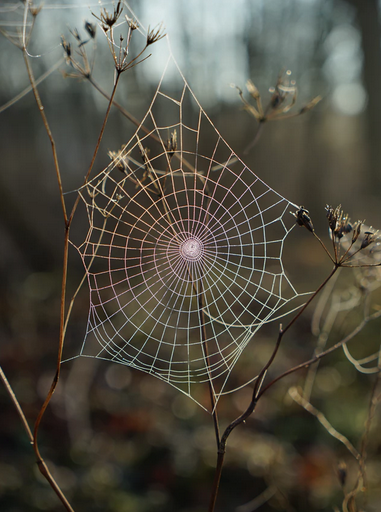
Photograph by Robert Anasch, Unsplash.
Likewise for the ancient Greeks, for whom the sisters of the Moirai, the weavers of the Three Fates, watched over the major themes — and the duration and timing — of each person’s life. Meanwhile, the ancient Celtic language of Ogham is also said by some to have come from the hatchwork patterns that appear in a spider’s web, along with other spider-inspired sacred knowledge long utilized by the Druids and bards.
Though the spider exercise we shared in this evening appeared simple in form, I was aware that the act of creative movement and the playful childlike response that it generated was functioning as a powerful catalyst for the consciousness of the entire group.
As a wildlife tracker, I have learned firsthand the power of “becoming” that which I am tracking. Each footprint brings me closer to the energy and wisdom of the animal as I step increasingly into the feeling and movement that is evident in the trail (I write about this process in more detail in the final chapters of my book, Conscious Nature: The Art and Neuroscience of Meditating In Nature).
Psychologists refer to this ability to intuit the internal states of those around us as “Theory of Mind.” This crucial social skill opens a doorway to the empathy and awareness that helps us to perform at a high creative capacity when interacting collectively with others in a group. Its origins can be seen clearly in the art of tracking, an ancient perceptual skillset which reaches back to the dawn of our species.
When we mimic an animal, we fully engage our senses, activating vast networks of the brain’s neurons; as the brain mirrors the external expressions and gestures of the animal as registered through the senses, the imitative movement of the body connects the mind of the tracker with the mood and behavior of the animal.

Photo by the author (c) 2019.
It is known by many tracking cultures that attuning in this way connects the tracker not only to the story of the tracks, but also to the larger wisdom of the animal. Each animal species has a different way of approaching life and thriving in Nature. These ways of being are clearly evident in the tracks and trails left by each animal as it goes about its life… if the observer is open to receive the story.
For instance, the stealth of the bobcat lying in ambush of a grouse teaches a tracker the arts of positioning and quietude. Meanwhile, the ever-roving coyote, constantly traveling on its rounds in the hopes of flushing a rabbit from the brush, displays the merits of constant investigation and curiosity.
This time, the precision and humility (related to humus, literally, “close-to-the-earth”) of the tarantula was our teacher. The Mamos were carefully plucking the strings of our awareness bit by bit, first with story, and now with intentional motion. Next, we would move into the transformational modality of song.
Reciprocity With Nature: Pagamento, and Singing to Nourish the World
After we had awakened our connective bio-circuitry through the power of story and imitation, the Mamos shared more about their vision and work in the world. They feel they have been put here to bring balance and harmony to the world, by feeding the spirit of Nature through ceremony and pagamento, which means “payment” or “give-back.”
Later in the week, a group gathered again with the Teyuna to support this essential ceremonial healing process. The Mamos said:
“We take constantly from the air, from the earth, from the water… but we need also to give back. We do this with pagamento, special ceremony that nourishes the spiritual forces behind the elements. The Earth tells us which places need to be balanced, so we go to offer ceremony and bring harmony. This is our purpose. The first things we look at are the states of the water, the trees, the soil, and the air. This analysis tells us whether the area needs balancing, and in what manner.”
There are many ways to make a give-back to the land; one of them is through song. During the first evening gathering, one of the Mamos also shared that as a boy, his grandfather used to wake him up at 5 AM each morning, saying “I need you to go sing to the trees.” There is a song, he said, for each kind of tree, and one for the grasses, another for the pumpkins, and there are even songs for the waters and for all of the other beings that share the world with us.
The Mamos explained that by singing with love and intention, a kind of energetic give-back is shared with the unique spiritual archetype that upholds each species, ensuring its health and well-being.
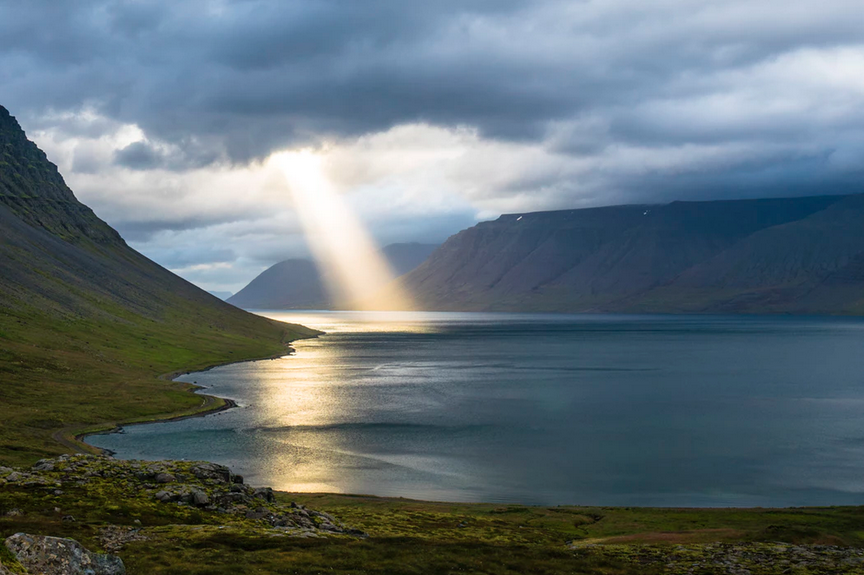
Photograph by Davide Cantelli, Unsplash.
Some Wisdom traditions refer to these mysterious formative forces as Devas, archetypal spirit beings that encode the energetic blueprints that then take shape through the elements to express in the physical world.
Just as our lungs automatically convert air into useful energy that fuels our bodies, the Devas are said by many sages to absorb the thought patterns and intentions held by humans, using these energies to inform their own creative process.
By attuning our minds and hearts with love to Nature’s patterns, we create a positive feedback loop with these creative powers, ensuring balance and harmony. In many Mystery Schools, and certainly for the Mamos, song is known to be a powerful vehicle for carrying our intention and energy to the creative forces of Nature.
Discover the Songs of Nature In Your Neighborhood
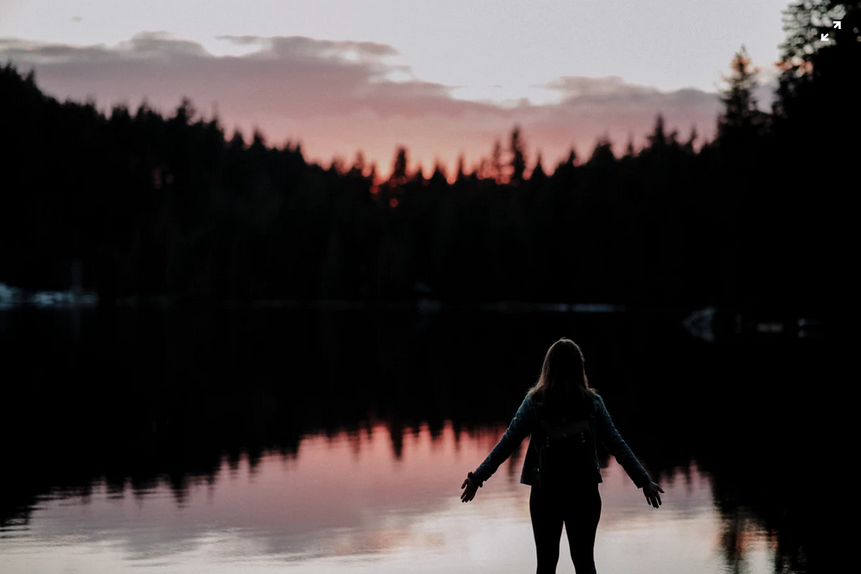
Though the Teyuna have their own ancestral songs linked to the natural life forms in their area, songs that reach back thousands of years, you can discover the songs of the Nature in your place, too; just open your mind to the possibility, and go sit or walk quietly and mindfully. Root your awareness in your senses, and simply be with Nature’s unique expression in that moment.
Who knows what song might come to you? The buzz of a bee, the steady quiet pulse of a dandelion flower beaming in the sun, the swift current of a river, or the whispering of the breeze in the sky… however Nature responds, be ready to catch the tune, and notice how the land feels (and how you feel) when you lend your voice to the song of the Earth.
Through practicing mindful awareness, you are making a space, an opening, for Nature to inspire you about how you can give back to the land, too. This work of healing belongs not just to the Mamos, but to all peoples, for we are all the children of the Earth.
Learn More
Thank you to the Teyuna people for sharing your wisdom and insights. Learn more about the travels and work of the Mamos at https://teyunafoundation.org/
Thank you to Wild Earth, Radio Kingston, the Good Work Institute, the Circle Creative Collective, Harambee Coalition, and Earth Designs Cooperative for supporting the Teyuna in their healing work during their travels in the greater Hudson River Valley and beyond.
Thank you to Feedspot for welcoming Conscious Nature to the Top 50 Mindfulness Blogs list.
Deepen Your Journey Into Nature
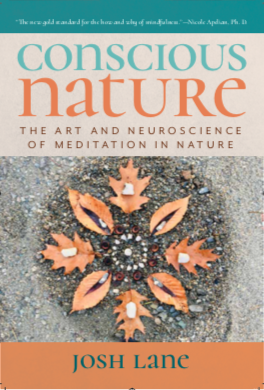
Experience mindful meditations for connecting more deeply with the Nature within and around you
Expand your senses as you relax into Nature’s patterns
Feel more at home in the outdoors, and more grounded in your body wherever you go
Learn how to harness the Five Key Brainstates of Awareness for well-being and creativity
